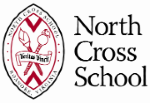Article by Cecily Garber
Since Net Assets first covered the topic in 2014 (“ Charging on the Curve”), growing numbers of independent schools have experimented with eschewing traditional financial aid in favor of setting a tuition range that reflects families’ unique financial situations. Their overall goals are to increase enrollment (and net revenue) by mitigating the sticker shock that keeps some families from even applying. Here’s another look, based on two schools’ strategies today.
North Cross School
“It is more affordable than you think.” That’s the message North Cross School strives to deliver with its “Tailored Tuition” approach. “We looked at a couple of other schools that were offering an ‘indexed’ model,” said Karen List, associate head for finance and operations. “However, we wanted to have more flexibility.” The school continues to assess need through its traditional financial aid service, but assigns participating families “total tuition responsibility” based on factors including their income, mortgage and other debt burdens, and grandparent contributions. “It’s essentially a marketing spin,” explained List, associate head for finance and operations. “We’re selling it in a different way to catch the attention of families who thought we were too expensive to even consider. This opens the door to the program.”
The 2016-2017 year has been the school’s first with the new model, so it’s too early to assess results, but inquiries from new families are up. Furthermore, no full-pay families have applied for the Tailored Tuition program. Part of the roll-out was a “Finance 101” presentation (see video below) that uses actual classroom budget numbers to demonstrate how the model narrows the gap between revenue and expenses, supports the school’s commitment to a diverse student body and actually reduces the tuition burden for full-pay families. “The dollars received from full tuitions and tailored tuitions both develop revenue that contribute to the cost of our complete program,” says the video voiceover.
Golda Och Academy
“Tuition Max” at Golda Och Academy uses a simpler sliding-scale approach to support families with adjusted gross incomes between $150,000 and $325,000. Those at the higher end pay tuition capped at 15 percent of their income (regardless of how many children they send to the school), and those at the lower range pay no more than 10 percent, with families in between paying incremental increases. Families earning less than $150,000 or who have special circumstances — such as mostly W-2 income — apply through the traditional financial aid process. The overall goal is to attract a sustainable mix of full- and partial-pay families amid rising requests for aid.
The model took root following the 2008 recession, when a parent survey revealed a “barbell effect” at the school, recounted CFO Julia Malaga. High-income families who could comfortably afford tuition and low-income families who qualified for financial aid were happy, whereas middle-income families who struggled to pay tuition bills were the school’s least satisfied constituents. This led to “G.O. Grants” (G.O. for Golda Och) of $5,000 to families that earned no more than $300,000 and for whom tuition exceeded 10 percent of their income. The application was simple: the first two pages of the family’s tax returns.
As the program grew, so did demand for traditional financial aid. To make Golda Och affordable to a range of families, the school ran a large-scale endowment campaign, with matching donations from the school’s major benefactor. At the same time, the region’s federation of Jewish schools worked together to create a community-wide strategy to send the message that families whose children attend a federation school pay no more than 18 percent of their adjusted gross income for tuition.
Today, “Tuition MAX” retains a similar structure, with minor differences among participating schools. Through a standard application, families with incomes between $150,000 and $325,000 apply by answering five questions and sending two pages of tax returns. Golda Och’s $47 million endowment, which provides $2 million in aid each year, makes this program possible.
Tuition MAX not only saves families time and the discomfort of disclosing extensive financial information, but it saves time for the business office as well. Once all applications are in after winter break, Malaga performs a simple mail merge that distributes award letters — in contrast to the weeks of back-and-forth communication the traditional financial aid process often requires.





